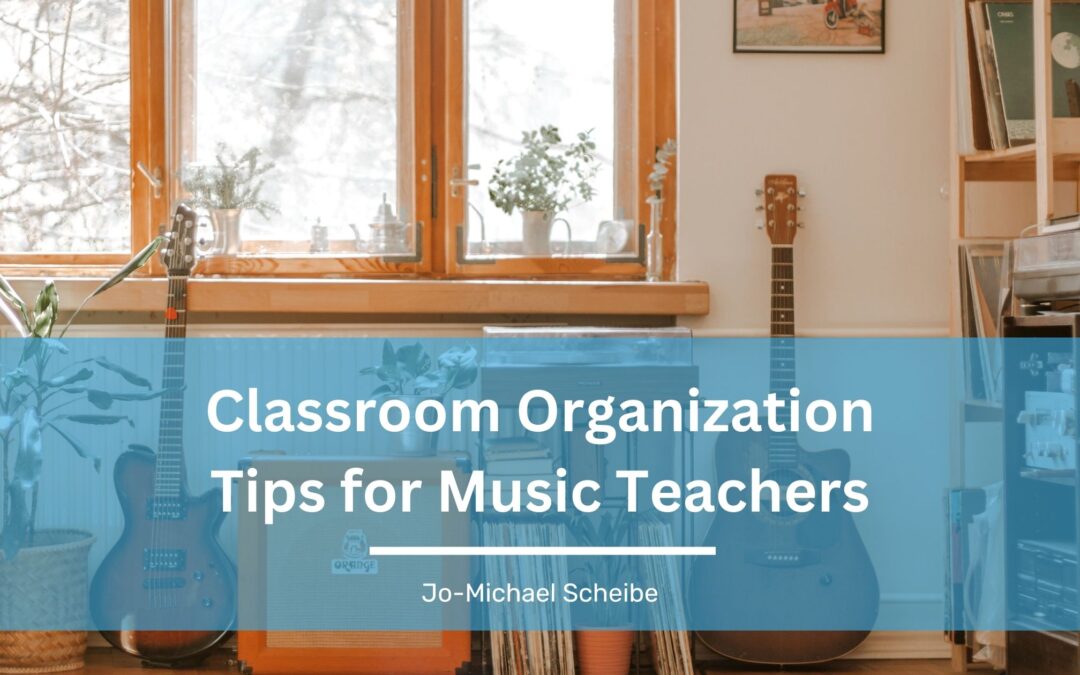As a music teacher, a well-organized classroom can make a significant difference in the effectiveness of your lessons and the overall learning experience for your students. Here, we’ll explore valuable classroom organization tips to help music teachers create an inviting and efficient learning environment.
1. Instrument and Equipment Storage:
Proper storage of musical instruments and equipment is essential. Use labeled shelves, cabinets, or instrument-specific racks to keep everything organized. Consider using clear containers for small accessories like mallets, reeds, and music stands. This makes it easy for students to find what they need and encourages responsible instrument care.
2. Music Library Organization:
Maintaining an organized music library is crucial for quick access to sheet music and teaching materials. Label and categorize music scores by genre, difficulty level, and instrument. Invest in sturdy shelving units or filing cabinets to store and protect your music collection. A digital catalog can also help track your inventory.
3. Classroom Layout:
Arrange your classroom to optimize the flow of instruction. Ensure that students have clear sightlines to you, the conductor, and any visual aids or technology you use. Consider the placement of pianos, whiteboards, and audiovisual equipment to enhance accessibility.
4. Seating Arrangements:
Plan seating arrangements carefully based on the specific needs of your ensemble or class. Arrange chairs in a semicircle for optimal sound projection and visibility. Depending on the activity, you can easily switch between circles, semi-circles, or rows to accommodate different teaching styles.
5. Visual Aids and Posters:
Use posters, charts, and musical notation displays to enhance your classroom’s visual appeal and educational value. These can serve as valuable teaching aids and create an engaging atmosphere. Ensure that visuals are clear, relevant to your lessons, and well-maintained.
6. Technology Integration:
If you use technology in your lessons, ensure audiovisual equipment is set up for easy access and visibility. Organize cables and connections to minimize clutter. Consider investing in interactive whiteboards or digital music software to enhance the learning experience.
7. Storage for Personal Items:
Designate a specific area for your items, such as bags and coats, to separate them from the teaching materials and instruments. Having a designated space helps maintain a professional appearance and prevents distractions.
8. Lesson Planning and Materials:
Create an organized system for storing lesson plans, teaching materials, and curriculum resources. Use binders, folders, or digital platforms to keep your materials accessible and well-organized.
9. Clear Communication:
Establish clear procedures and routines for your classroom. Communicate these expectations to students, ensuring they understand how to handle instruments, music, and classroom equipment responsibly. Consistency in communication and enforcement is key.
10. Regular Maintenance:
Schedule regular classroom maintenance sessions to keep your space tidy and organized. Encourage students to participate in clean-up routines to instill a sense of responsibility and ownership.
In conclusion, classroom organization is a vital aspect of effective music teaching. An organized classroom creates an environment where students can focus on learning and making music. By implementing these organization tips, music teachers can enhance their teaching methods and create a positive and efficient learning space for their students.

